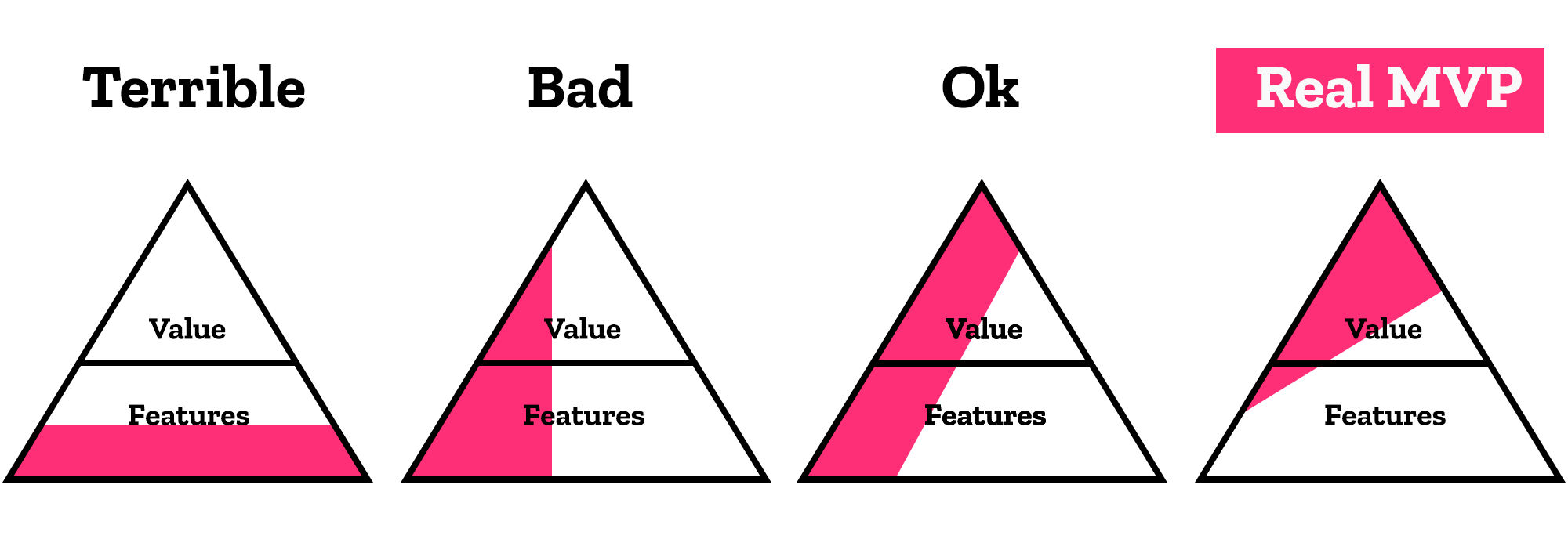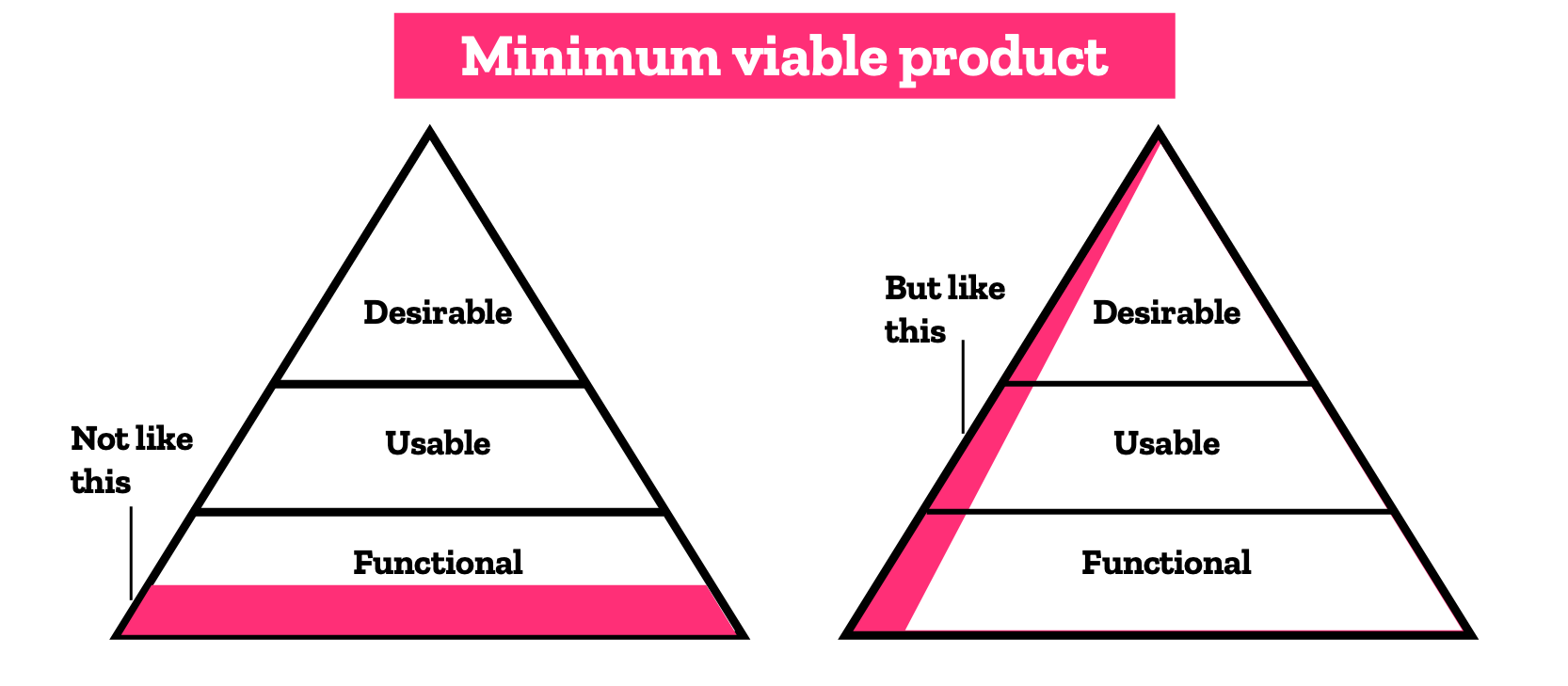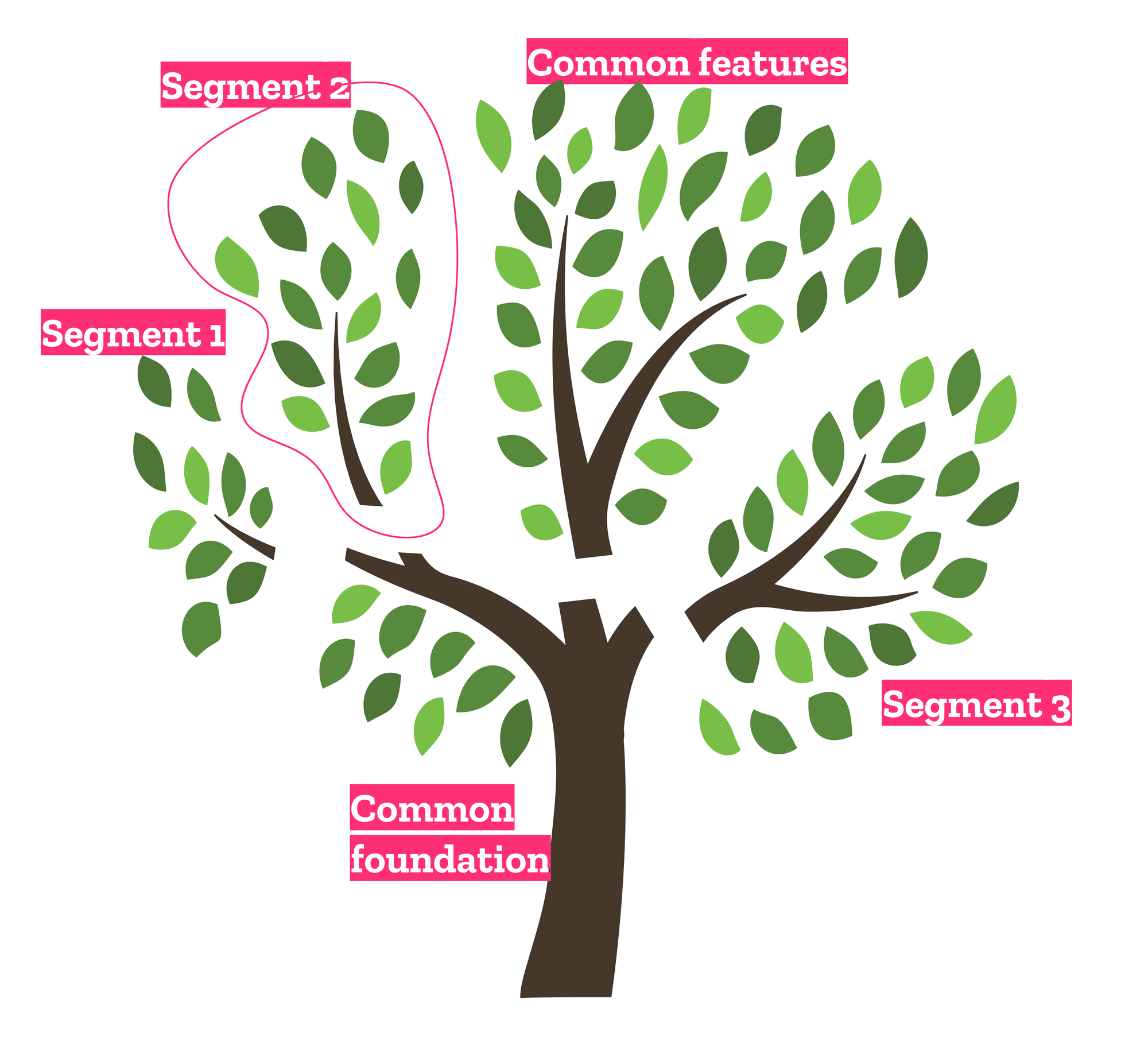
Why a minimum viable product can be bad for your business
There seems to be a major misconception of what an MVP is and is not good for. In this story I contrast the MVP approach with feature creep in developing new generations of digital products, arguing that V2.0 is never an MVP and should not be treated as such.
There seems to be a major misconception of what an MVP is and is not good for. In this story I contrast the MVP approach with feature creep in developing new generations of digital products, arguing that V2.0 is never an MVP and should not be treated as such.
Use MVPs if you think you can surprise the audience. Don’t launch an MVP if your customers are waiting for something similar than before, only better.
Checklist: is an MVP right for you?
There are clear signs that warn you when you should forget about developing an MVP. Warning signs of situations poorly suited for MVP-type product makeovers:
1. Strong customer base
2. Clear customer expectations
3. Established competition
4. Proven demand for existing features
If you see any of these signs, you should treat your product makeover plans with caution. Above all, your decisions should be informed by detailed qualitative and quantitative customer research that helps forecast how your current customers will react to radical changes to your product.
It does not mean that you should abandon Agile principles, rapid prototyping, or early testing of new ideas. Rather, this is a warning against blind faith in the power of the MVP in situations which call for an improved product, not a bad substitute.
Read on to understand why and how!
What MVP was designed for
The suitability of minimum viable products, or MVPs, in different scenarios has been debated since the birth of the concept. However, lean startup thinking and its variants have picked up speed across the globe, and the fire of speedy new business and product development has spread. This means that interest in and awareness of MVPs has not faded. At least in Finland, more and more organizations seem to have adopted the term into their vocabulary for describing innovation projects.
The problem is that, very often, an MVP is not the right solution for corporations seeking improvement in their digital product and service portfolios. An MVP, as defined in the Lean startup framework by Eric Ries, is a tool to explore and develop in unknown markets to discover product market fit and to develop a startup through the product. If the market for your product is something else, the MVP approach will not work.
This thinking is captured well by the image below, which describes the relationship between value and features embedded in the “real MVP” vs. bad and terrible MVPs that are strongly focused on features. For a real MVP, you need minimal features, but much new value. In customer research, you should utilize all forms of “real MVPs” , faking it before making it. By providing users with as much as value as possible, you can elicit more realistic responses that give you an idea of what you should and shouldn’t do.

Oldie but goldie. Adapted from Nestholma.
Previous interpretations of the MVP concept have also stressed that simply building features without consideration for other dimensions of product quality (such as usability or the user experience) are destined to fail. This is encapsulated beautifully in the image below. I’m totally in with the goals of this approach. But that is not enough for product management.

Originally from a tweet by Jussi Pasanen.
When you should not embrace simplicity
If customer expectations are firmly established and competing products have a stack of features, it will be difficult to satisfy the customers fully without a comprehensive bundle of features. And a multitude of features is an antithesis of the MVP approach.
Say your local grocery store has always been stuffed with ten of your favorite products, but then one day it suddenly cuts its selection to half just to improve shelf placement. Improvements in accessing the remaining five items may not justify the lack of options for you. Instead, you have to start thinking about where you should take your business to better satisfy your vegetarian cravings.
The lesson: it is generally not good to go against validated demand, unless you’ve calculated your business case so that you can afford to lose some customers.
How to lose a few pounds but maintain a good shape
Difficult to satisfy doesn’t mean impossible. If your product is innovative enough to tap into previously untapped needs or can find other ways to make old features redundant with an outcome that the user is happy with, then pruning features might be okay. The grocery store metaphor doesn’t work well here anymore (unless you count ready meals and salads as a food innovation).
Let me give you an example of how MVP thinking was successfully applied to a difficult product category with high and firmly established customer expectations.
Tesla Roadster, the first vehicle to roll out of the now iconic (even though troubled) electric vehicle factory, was an MVP of sorts. However, although it may not have passed as a full mobility solution for all consumer segments, it lacked none of the main features expected from a modern sports car. For the small segment of sports car drivers, it was totally relevant.
There are several digital success stories that involve abandoning features once thought necessary to the product’s competitiveness. For instance, embedded AI features have replaced the need for extensive photo tagging in Google Photos.
Tinder’s cruelly effective browsing metaphor has simplified online dating from complicated profile-based matchmaking to something more straightforward, and at least commercially very successful.
Pruning the product’s feature tree to a minimum
Can you reasonably prune an advanced software product without resorting to an MVP? I think you can, because many products that have been around for a long time suffer from feature creep. This refers to the tendency of products to accumulate features and complexity over time. Once you admit the problem, there’s a way out of it, although it can be difficult. This takes us to the MVP.
For feature-heavy products, you can utilize data-driven design to find out which existing features are used in the first place. Designers in a Finnish sports watch company Suunto have tried this and admitted how bad designer intuitions about “killer features” really are. Qualitative research can reveal whether the features are used as designed or are they being used for something else, for instance to compensate for shortcomings of the product.

The anatomy of a fully grown product. The root is the “original MVP” out of which features have grown in response to real or perceived customer needs in different segments. There may be an important branch of features with shared importance, but also many areas that appeal only to specific customer segments.
One thing you need to think about is whether customer segmentation is relevant for features. Are some features only relevant for a certain audience? This is natural to some products, such as platforms, and must be taken into account.
Going back to the Tesla Roadster example, the decisions rendered the vehicle irrelevant for the majority of customers, but this served Tesla well. It would not work the other way around. Maybe you can consider launching a new product only for a specific segment, in which case you are actually getting closer to the MVP approach. This case is described by Eric Ries in The Startup Way when he discusses how GE gave up a plan to create a new product for five use cases (in five years) in favor of a single use case which could be explored with an MVP product in a year.
But wait, shouldn’t you always shy away from just providing “faster horses” as the infamous and incorrectly attributed Henry Ford quote goes? Most of the time, no. You don’t send a milking cow to the butcher. You can breed and raise radically different types of beast and cannibalize your old business in the long run, but don’t throw away your customers by messing up your key product.
Further reading
Nestholma: Minimum Viable Product (MVP) – unnecessary jargon of the startup world?
Eric Ries: The Lean Startup (2011), The Startup Way (2017)



